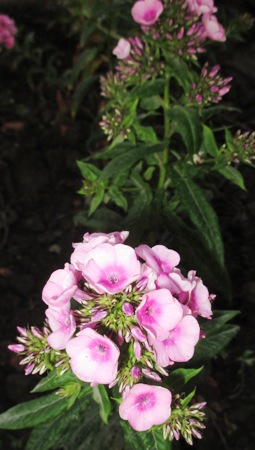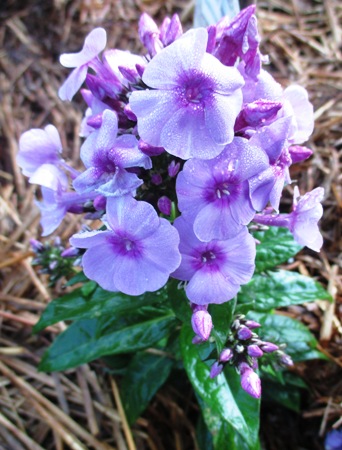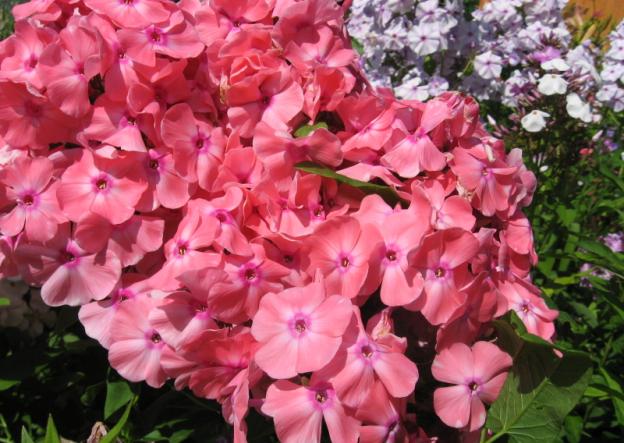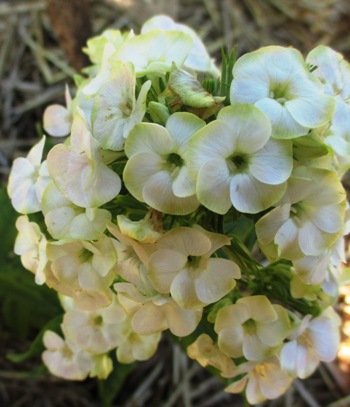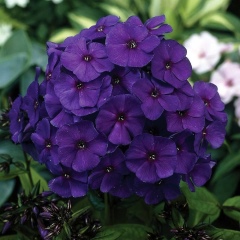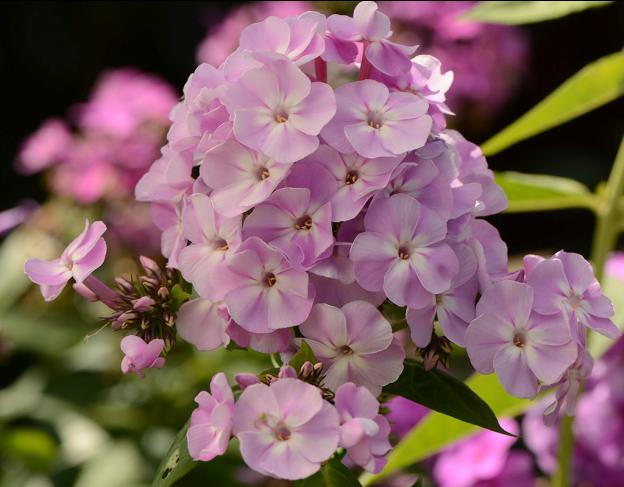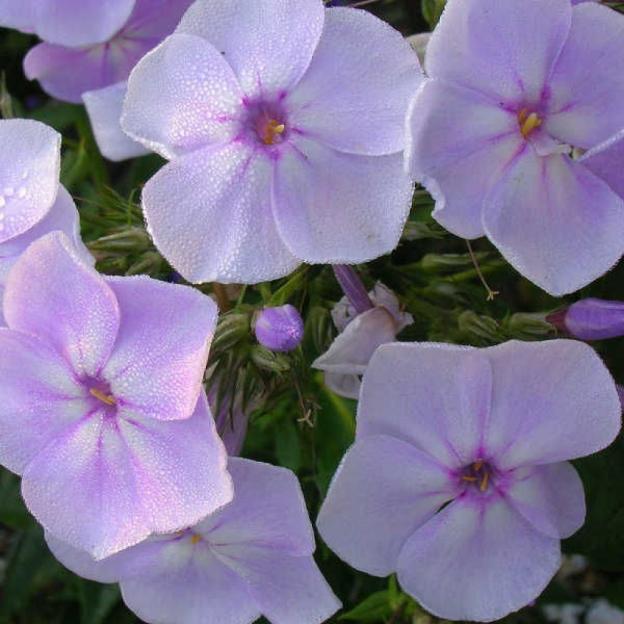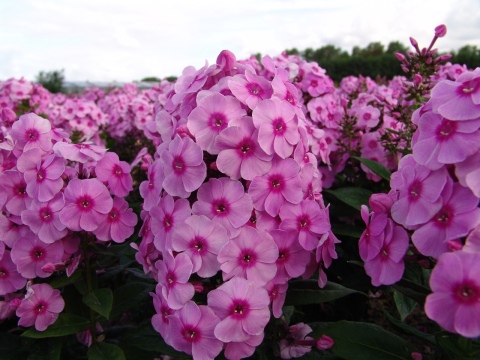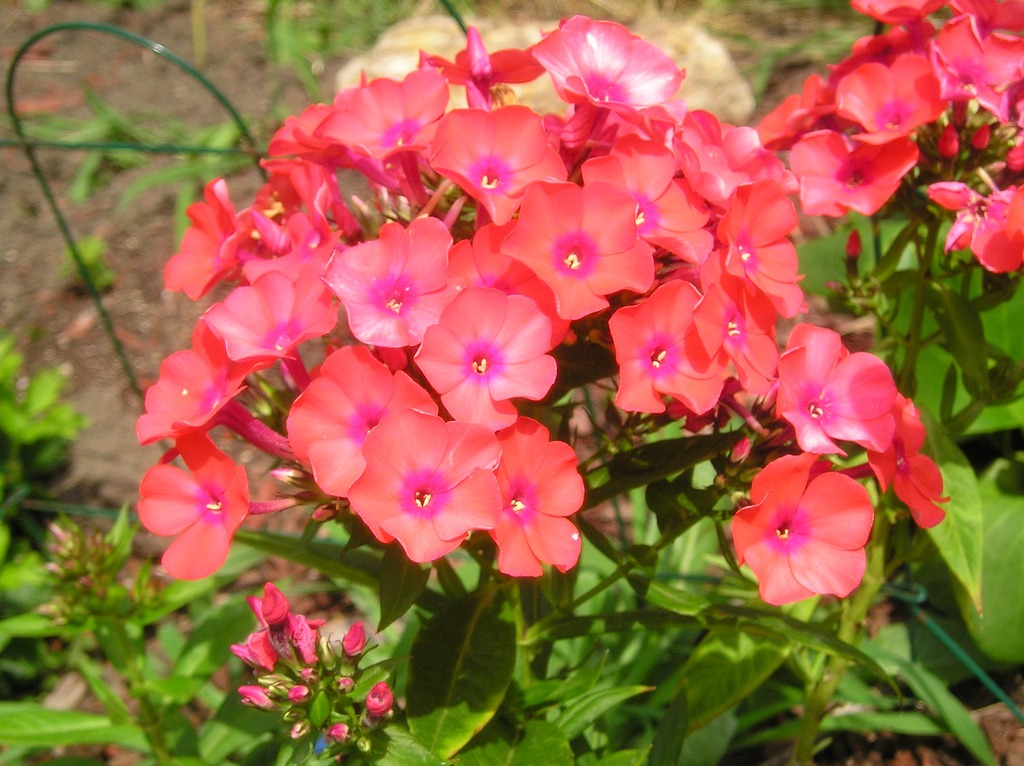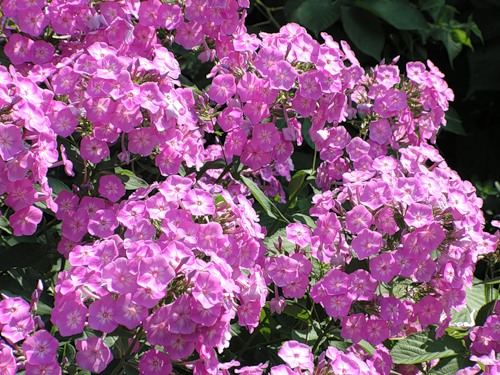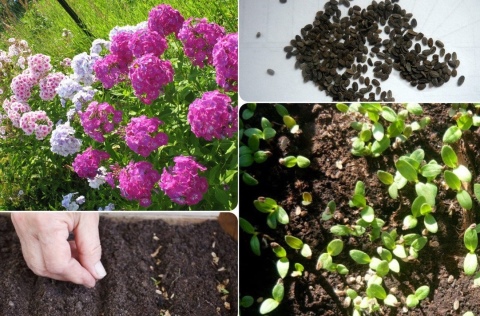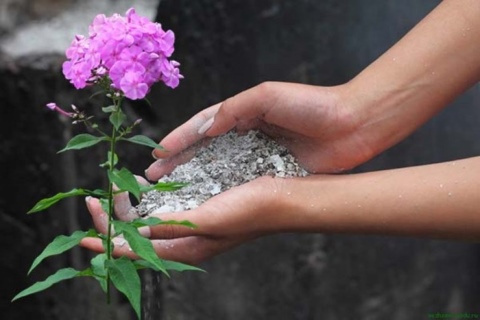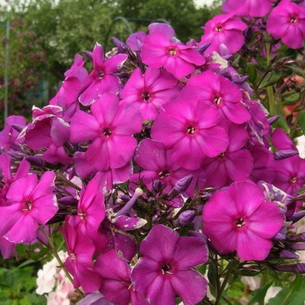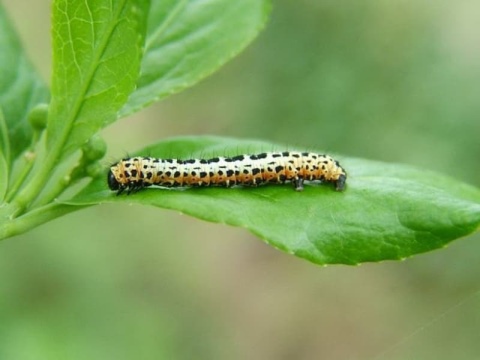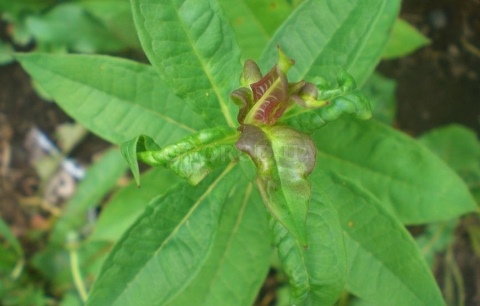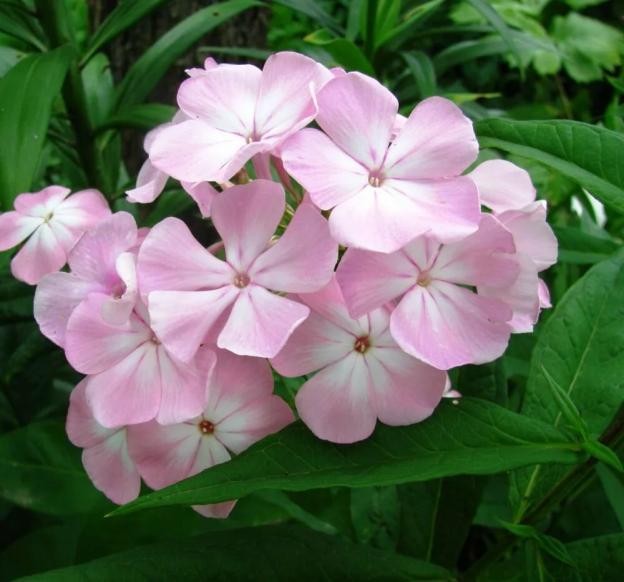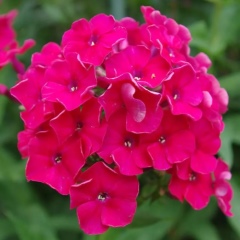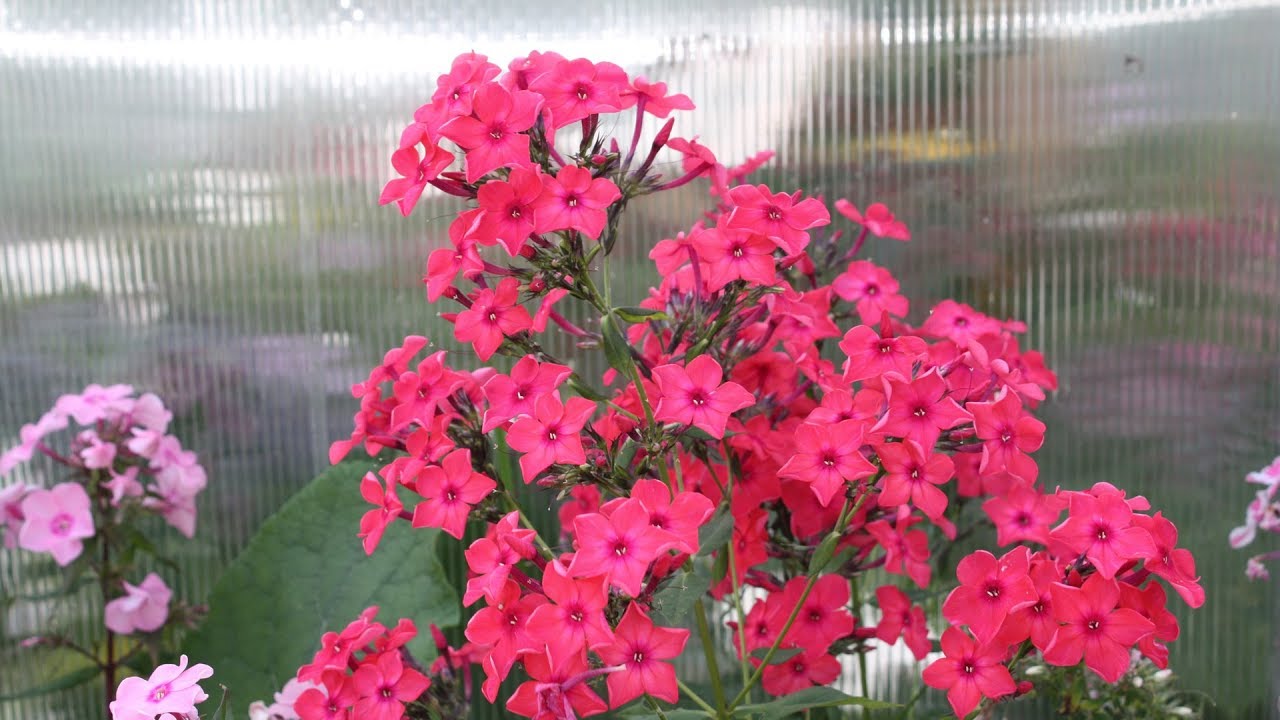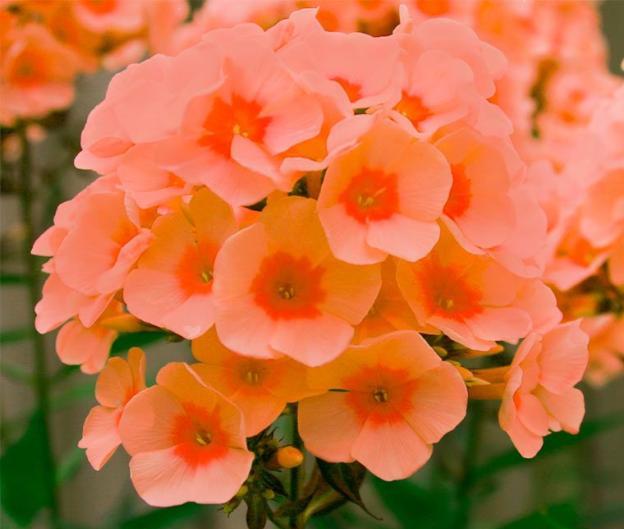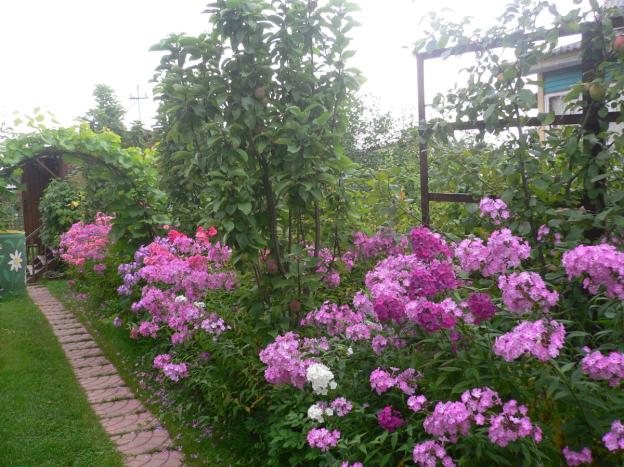Reproduction of phlox
Varietal phlox can be propagated by dividing bushes, stem and leaf cuttings, spring shoots, summer-autumn axillary shoots, root cuttings.
The division of phlox bushes is carried out in early spring or early autumn (at this time, the bushes should be divided into larger parts). The dug out bush must be shaken off or washed from the ground and separated by hands: first, precisely separate the plexus of the root necks, then disassemble the roots going to them. The knife should be used only when it is not possible to divide the rhizome with your hands, and you only need to cut it with a knife where the root necks grow together. Each separated part should have growth buds - “eyes” or shoot rudiments and a small number of roots.
Reproduction of phlox by stem cuttings can be carried out from the end of May to the 2nd half of July. For cuttings, take green, well-developed stems from healthy plants. Each stalk should have 2 knots, with the bottom cut just below the bottom knot, and the top one 5-10 cm above the top knot. Cut off the lower leaves completely, keeping the axillary buds. Plant the cuttings in shade, deepening them into the soil approximately to the upper node. For the first week, cuttings should be watered with warm water several times a day, making sure that they do not wither.
When propagated by leaf cuttings, an axillary bud with a leaf is used. In the summer, during the period of full development of the phlox stems, a shield 8-10 cm long with an axillary bud and a leaf is cut from their middle part with a sharp knife or razor. When planting, the flap should be placed vertically, deepening the axillary bud by 1.5 cm, cut off large leaves by 1/3. The plantings should be sprayed with warm water and the boxes should be covered with glass, placed in a room with a temperature of 25 ... 30 ° C. The sand must be constantly wet. By autumn, a plant with one stem is formed from a leafy cutting. For the winter, it is recommended to put boxes in a cold greenhouse, insulating it from above. In the spring of next year, rooted cuttings can be planted in open ground.
Reproduction of phlox by spring growth shoots - a type of propagation by stem cuttings
Growth shoots can be taken from heavily thickened bushes, carefully breaking them at the very base with a "heel". For better rooting, shoots should be planted in a warm greenhouse or greenhouse - in the open field they do not take root for a long time
You need to water it with warm water. In the second half of May and early June, rooted shoots can be planted in open ground.
Summer-autumn axillary shoots propagate phlox in the same way as spring growth shoots. It is necessary to use shoots growing in the leaf axils.
For this, non-lignified, healthy thick and long roots are suitable. They need to be cut off at the very base of the rhizome, cut into pieces 3-5 cm long and planted obliquely in exploration boxes filled with nutritious soil. First, the boxes should be placed in a room with a temperature of 10 ... 15 ° C, after 10-15 days they should be rearranged to another room with a temperature of 18-25 ° C and kept in shade.
When the shoots appear, the shading must be removed and the plants must be gradually accustomed to light, and then transplanted into open ground. Sprouts do not appear on all root cuttings, and they develop unevenly, therefore, plants should be planted in open ground selectively, as the sprouts grow. This method of propagation is especially valuable when the plants are infected with stem nematode, but it is necessary to preserve the variety.
Use in landscape design
Phlox "Dragon" is appreciated for its unpretentiousness, winter hardiness and bright fragrant flowers.It is planted in parks, city flower beds, alpine hills, used as a background plant against the background, for example, of low hosts. This variety is ideal in combination with daylilies, astilba, garden geraniums. It looks beautiful with perennials such as tulips, irises, roses. Planted together with other varieties of phlox, "Dragon" will never get lost against their background thanks to its unique flowers.

See below for the features of growing phlox.
Phlox paniculate dragon - dark purple-violet with gray strokes and a small bright carmine eye. The inflorescence is round-conical, loose. The bush is durable.
Description Phlox panicled Dragon. Height - 80-90 cm. Flower size 4.3 cm. Flowering period - medium early (from mid-July). Winter hardiness zone 3 (-40 / -34 ° C).
Phlox paniculata is a perennial herb of the Sinyukhovye family. The homeland of phlox is North America. One of the most popular crops in floriculture, it is valued for its unpretentiousness, winter hardiness, bright, lush, long flowering. The height of the plant varies from 40 to 150 cm. The powerful root system is located in the upper layers of the soil and is perennial, but the aboveground part of the plant dies off annually. Stems of phlox paniculata are erect, with elongated pointed leaves. Inflorescences can be round, cylindrical, oval-conical, pyramidal and hemispherical, of a wide variety of colors, except for yellow. Phlox flowers with a diameter of 2.5 to 4 cm, do not open at the same time. Varieties differ in flowering time and can be early, medium and late flowering.
Place for planting Phlox paniculata Dragon. An area with diffused lighting is considered optimal for planting phlox, scorching sunlight can burn the leaves of the plant. Phloxes do not like drafts, do not grow well under tree crowns, on the slopes and on the north side of the site. The best soil will be fertile, well-moistened, but without stagnant water.
Landing Phlox Panicled Dragon. Before planting, the site is dug to a depth of about 35 cm. Sandy soils are improved by the introduction of humus, acidic soils are lime in the fall. Drainage is required on clay soils. The distance between plants during planting depends on their size in adulthood, and varies from 30 to 70 cm.On thickened plantings, the decorativeness of the plant is lost, in addition, phlox grow in one place without transplanting for up to 7 years, so they need to take a fairly spacious one in advance. plot. Before planting, back soil is poured into the pit, fertilizers are added, and watered. The roots of the plant are buried 4 cm into the soil, sprinkled with garden soil on top, compacted, watered abundantly.
Phlox panicled Dragon care. Phlox care is not at all burdensome. Plants need regular watering, fertilizing with mineral fertilizers, phloxes respond well to the introduction of ash - the color of flowers improves. You do not need to cover phloxes for the winter, they tolerate frosty winters well. With the onset of cold weather, phloxes are cut at a height of no more than 10 cm from the soil level.
Reproduction of Phlox paniculata dragon. The simplest and fastest way to reproduce phlox is to divide the bush, which is carried out in autumn or spring. Such plants bloom in the first year after planting. Perhaps phlox cuttings in June-July, for which they use young green shoots up to 10 cm long.
The use of Phlox Panicled Dragon in garden design. Paniculate phlox are ideal for group and single plantings against the background of an emerald lawn, while it is possible to use single-color varieties or a combination of their various colors. Phlox are indispensable in mixborders and country-style gardens. In this case, bells, aquilegia, rudbeckia, and carnations will be excellent neighbors for them. Phlox are excellent for cutting, keep freshness in water for a long time.
Description
Phlox "Orange Perfection", also known as "paniculate", is a beautiful ornamental plant. The name of this flower is also interesting and rather unusual. The word "phlox" is translated from Greek as "fire". "Perfection" in translation from English means "perfection", and "orange" means "sunny" or "orange". This whole combination of words fully reveals all the qualities of this type of flowers.
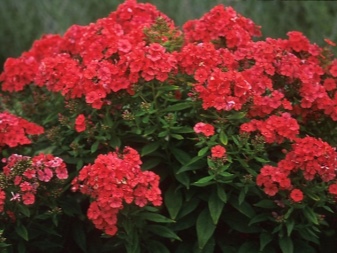
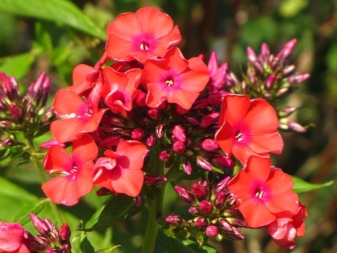
Despite all the unpretentiousness of this flower, you still need to take care of it. It all starts from the day of landing
It is very important to choose the right place for this - it must be well lit. The plant feels pretty bad in the shade.
Another important care factor is watering. After all, the lack of water for phlox can be destructive. This is because the young roots are at a depth of about 14 centimeters from the surface of the earth. In addition, the lack of moisture will also have a bad effect on the flowers, they will be much smaller. If we talk about watering rates, then at least 1 bucket of water should be poured under one bush. This is best done in the morning.

Don't forget about fertilizers. It is necessary to carry out top dressing 3 times per season. The first time this is done immediately after the snow has melted, you can use ordinary manure. The second top dressing is also applied in the spring - at the time when young shoots begin to grow. You need to use potassium-phosphorus dressings. The third feeding falls on the time when the plant has completely faded.
Also, when planting a plant, you need to cover the ground around the bush with a layer of mulch. After all, phlox roots grow very quickly. If you do not mulch the surface, then in severe frost, the bush can freeze and die. Both deciduous humus and peat can be used as mulch.
You need to regularly remove weeds around the bush, as well as loosen the ground. This will help oxygen to penetrate freely to the phlox roots. You also need to be careful about the process of transplanting a bush. This should be done no more than once every 5 years.
Description of the variety
Phlox numbers about 70 species. Before purchasing, you must read the description of the selected variety, get acquainted with its characteristics. Orange phlox is a low decorative flower, with a bright red inflorescence and a cherry eye inside. The size of the flower bud is up to 4 centimeters. The peculiarity of this variety is that it does not fade in the sun. Translated from Greek, the word phlox means "fire", flower buds, like lights are burning in the light of the sun. The word "perfect" from English means "perfect" flower. Phlox is unpretentious in care and frost-resistant, blooms from the first month of summer to the end of September. The bush has straight and strong branches, covered with bright green foliage, height is about 70 centimeters.
Phlox paniculata Unic Orange can be attributed to the varieties "burning" in the sun. Refers to tall bushes up to 145 centimeters. The flowers are salmon pink with a crimson ring inside (3-4 cm in diameter). The plant is strong with well-developed foliage. Like a small flame shining in the rays of the sun.
How to take care of it properly?
A subulate phlox does not require special care. The main thing is that the planting site is large, the soil composition does not have heavy impurities, weeding is carried out in a timely manner, and fertilizers are applied if necessary.
Watering
For 2 weeks after the transplant, the phlox needs to get regular drinks. It is enough to water the seedlings once every 3 days. After a specified period of time, the gardener should observe the behavior of the plants and water only when the flowers begin to close.
The lack of irrigation water will not allow the phlox bushes to grow to the required height, and the flowering process according to the calendar will shift back. The buds themselves will be small, which will certainly affect the decorative features of the awl-shaped bushes. In the hot season, about 20 liters of water per 1 m2 of soil is spent for irrigation.With the arrival of autumn coolness and rains, watering stops. The top of the phlox stems are carefully trimmed off.


Top dressing
The growth rate and increased flowering of phlox occurs due to the introduction of humus. The main thing is not to overdo it with feeding, otherwise the plants will become lethargic. Routine fertilization is carried out at certain phlox life cycles.
When tying buds, it is important to fertilize the bushes with potassium-phosphorus additives.
As a support for immunity, at the end of the flowering stage, mineral fertilizing is applied.
Feeding with humate will help to recover from hibernation.
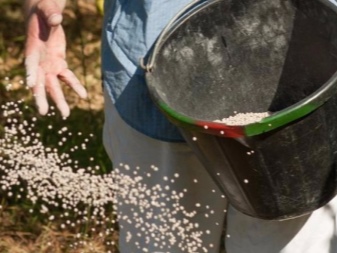

Ash solution is widespread among the owners of garden plants. This fertilizer is used to get rid of phlox from pests. It contains micro and macro elements that are important for maintaining the health and proper development of the bushes. In addition, the ash solution is used in all seasons. And there are no difficulties in preparing a medicinal mixture.
350 g of ash are poured into a saucepan, 2 liters of water are poured on top. After that, the liquid with ash is put on fire until it boils. As soon as boiling bubbles have formed on the surface of the water, it is necessary to measure 10 minutes. After the specified time has elapsed, remove the pan from the heat and set aside until it cools completely. The last step in preparing the solution will be to dilute the cooled mixture with 10 liters of water.

Excessive overuse of fertilizers is fraught with an increase in green growth and a decrease in inflorescences. To prevent this, you should be guided by a specially developed monthly feeding scheme:
- the last days of May - a composition of 10 liters of water and 25 g of liquid manure is introduced;
- the first days of June - a solution similar to May with the addition of superphosphate;
- first days of July - liquid manure without additional compound;
- the last days of July - the introduction of a potassium-phosphorus supplement.
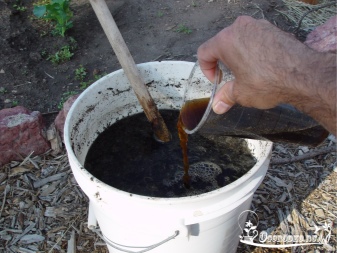
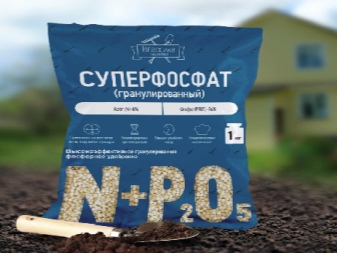
Pruning
The pruning procedure is carried out no more than 2 times a year so that the growing plants have the same height. The first trimming is done at the beginning of spring, the second in the last summer days. It is not recommended to touch phlox subulate in autumn. At this time, buds are laid, which the gardener may accidentally cut off. Then next year these areas will be bald.

Loosening and mulching
Autumn mulching will allow the gardener to do without summer feeding. In this case, the plant will develop and grow well. When loosening the soil, homemade fertilizer from humus or wood ash can be applied to the soil.

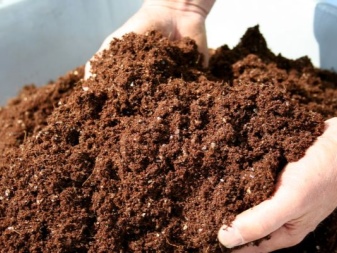
Transfer
It is not necessary to transplant phlox, and yet gardeners need to transfer these bushes. The reasons may be the decoration of another part of the garden, or a strong overgrowth of bushes.
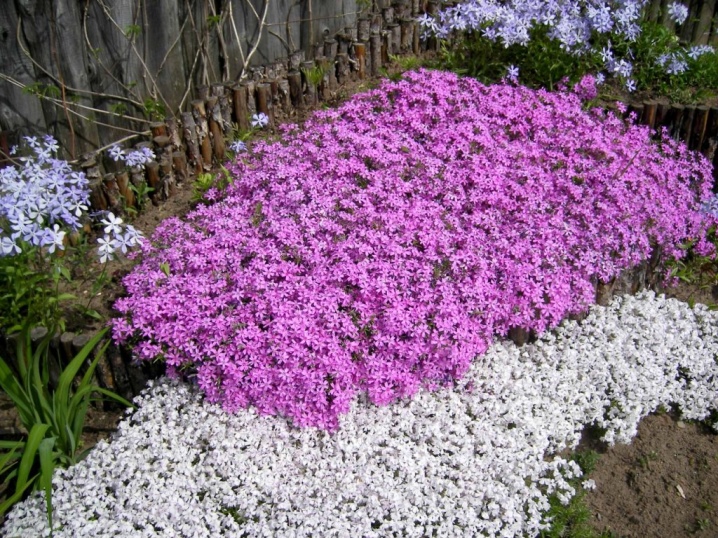
Preparing for winter
An important characteristic of the subulate phlox is frost resistance. There is no need to dig out the bushes for the winter, it is enough to cover the plant with insulation
In the northern regions, where the frosts are much stronger, it is necessary to cover the ground with spruce paws. Dry foliage and old rags will not work in this case.






